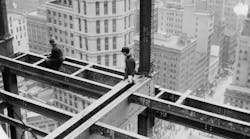The nonresidential-construction sector continues to grow at a solid pace, reflecting 18 months of improving activity despite rising costs of construction materials and labor and a slight decline in regional economies where most construction activity is taking place, FMI’s Nonresidential Construction Index (NRCI) for the second quarter of 2015 says.
Reflecting the observations and sentiments of a sampling of construction-industry executives nationwide, the NRCI for the second quarter came in at 64.9, essentially unchanged from the first-quarter reading of 64.8. The index paints a mixed picture of the current nonresidential-construction sector. On one hand, the NRCI component for the overall economy dropped 1.9 points to 76.9. While this is down from its peak of 81.1 a year ago, it still indicates panelists contributing to the index remain bullish about the economy. Similarly, indicators for the economies where panelists do the most business stood at 76.7, suggesting continued growth on a broad scale.
Business Improving Despite Rising Costs in 2015
Highlights from the NRCI point to diverse forces driving the industry at the midpoint of the year:
- Panelists’ business is now improving with the overall economy, indicating deeper, more sustainable growth.
- The nonresidential-building construction market where panelists do business is up 1.9 points to a solid 76.4. This is in line with overall economic growth, auguring for continued health in the industry.
- The measure of expected change in backlog improved 3.2 points, reaching 71.7, while current backlog remains at a solid 10 months.
- The component for the cost of construction materials dropped one point to 21.4. The component drops as prices increase. The cost of labor components dropped sharply by 5.2 points to 12.5. Both labor- and material-cost increases reduce the overall NRCI score.
- The productivity component continues to hang around 50.0, showing little improvement. It currently is at 51.0.
- Owners’ views concerning “green construction” indicate the most important factor characterizing the green-construction category is lower energy costs. Only 17 percent of panelists have more than 50 percent of their projects in the “green” category.
“While the current and future outlook for nonresidential construction appears stable, if relatively unchanged, things could become more dynamic,” Phil Warner, research consultant for FMI, said. “In fact, improvements in profitability would happen faster if costs of materials and labor weren’t rising faster than construction pricing. There is also an increasing amount of evidence that more contractors are capacity-limited.”
Green-Construction and Delivery-Method Trends
Many panelists noted that green construction is now mainstream and considered more the norm than a fad. However, few owners are willing to pay more to build “green,” according to panelists. In 2008, NRCI panelists predicted green construction would grow from just 13 percent of their then-current backlog to 38 percent in five years. A little over seven years later, panelists report that green construction makes up just 28.6 percent of their backlogs on average.
Responses related to construction-project delivery indicate a shift away from the approach of design-bid-build popular during the recession to more collaborative methods as a way to ensure the lowest initial price for projects. The expected rate of change over the next three years suggests a slow transition from design-bid-build and CM (construction management) at risk to design-build and the newer concept of integrated project delivery.
The report can be accessed at http://www.fminet.com.










